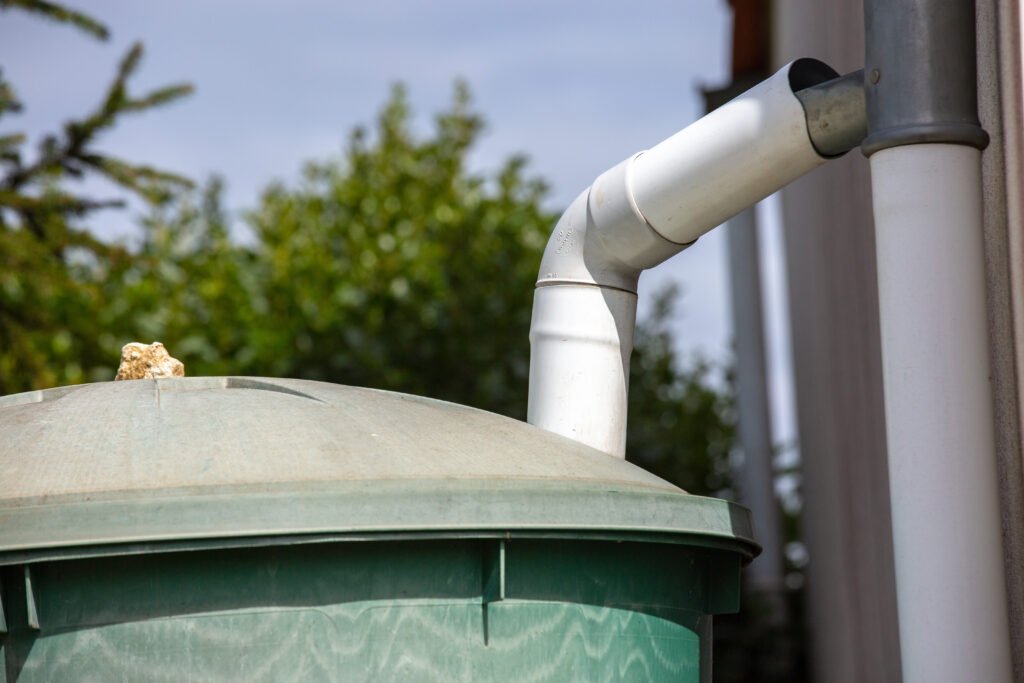Have you ever imagined a day without using or consuming water? As one of the necessities of life, you need a continuous supply of water in order to survive. Today, however, water shortages and droughts have become alarming issues.
Whether you want to start conserving water, reduce your reliance on municipal water lines or just need a consistent supply of water, rainwater harvesting can be a good alternative source. This post shares the basics of residential rainwater harvesting.
Table of Contents
Rainwater Harvesting: What Is It
As its name implies, rainwater harvesting is the process of collecting run-off from a structure and other impermeable surfaces to store it for later use. Traditionally, this means harvesting rain from your roof. The rain is collected in gutters, which channel it into the downspouts and finally into some sort of storage vessel.
The idea of rainwater harvesting originated in ancient times. In fact, cisterns for storing rainwater have been found in communities as far as the Neolithic times and by civilizations during the 2,500 B.C. Today, there are numerous rainwater catchment systems from durable plastics to steel tanks like the ones at www.watertankfactory.com.au/steel-water-tanks/. It has also become the norm in most counties like Australia and Germany and is expected to become more popular as more people realize the importance of water conservation.
Uses Of Collected Rainwater
Basically, harvested rainwater can be used in almost every way water from a well or even municipal water lines.
You can use it for outdoor and irrigation use including:
- Gardening and landscaping;
- Filling up water features;
- Washing your car;
- Washing driveways and sidewalks;
- Livestock water;
- Refilling swimming pools;
- Emergency water and fire suppression; and the like.
Rainwater can also be used for indoor use including:
- Washing the dishes;
- Doing the laundry;
- Flushing the toilet;
- Drinking and cooking provided that it’s properly treated and filtered; and others.
3 Ways To Harvest Rainwater
In general, there are several ways to harvest rainwater–from the basic DIY methods to more complex systems. Here are the three most common ways to harvest rainwater.

- Rain Barrels
This is the simplest and most common method that most homeowners are familiar with. It involves placing a barrel at a gutter downspout to collect rainwater. Homeowners can buy a commercially available rain barrel or opt for a recycled barrel.
The biggest advantage of rain barrels is that they can be implemented easily, regardless of where you live. Also, it’s more cost-effective and doesn’t require a lot of space or effort. That said, rain barrels can only collect limited water (50-100 gallons per barrel) and easily overflow.
- Dry System
A dry system is similar to the previous method of rainwater collection. Nonetheless, it involves a bigger storage volume so you can collect more water. After the rain, the water-collecting pipes essentially ‘dry’ the rainwater from the roof directly to the storage device. This means rain runs from the roof and directly to the top of the tank.
A dry system allows you to store more water and is ideal for areas where rainfall is infrequent but experiences large storm events. It costs more than simple rain barrels but is not as expensive as a complicated system. Plus, it’s easier to maintain. The only disadvantage is that the water storage tank should be located next to your house and should be parallel to your roof to collect water.
- Wet System
Unlike a dry system, a wet system involves connecting downspouts from different gutters in an underground collection pipe. The rainwater fills the underground piping and then rises in the vertical pipes to be transferred into a large water tank. The underground collection pipes and downspouts should have water-tight connections to prevent leaks and water contamination from underground debris.
The biggest advantage of this type of rainwater system is that it allows you to collect rainwater from the entire roof surface and not just a specific spot of your roof, therefore maximizing your rainwater collection. Also, since it’s connected by a series of pipes, you can also place the big storage tank away from your home.
That said since it’s more complicated than other systems, wet systems are also more expensive. You’ll have to install underground pipes and even apply pressure to push water into the tank.
How To Disinfect And Filter Rainwater
As mentioned before, rainwater can also be consumed or used for cooking, provided that it is properly treated and filtered.
If you plan to use rainwater for these purposes, you’ll need a more complex system that includes filtration tools and devices. A complete rainwater collection system includes several layers of filters to keep debris and dirt out of your water supply as well as a water-treatment process to ensure that the water is safe to drink and consume.
You’ll also need an appropriate water storage tank that’s made of materials that won’t leach into your water and prevent bacterial growth. It should be hooked to a control system to purify water and monitor water levels. Some systems may also require a pump to direct water, a backflow prevention system, and a flow meter, all of which are required to be hooked to a power source.
Takeaway
As the impact of climate change continues to worsen causing parts of the world to experience longer droughts, water pollution, and depletion of groundwater, rainwater harvesting has become a sustainable and appealing practice to ensure good access to water.
Whether you opt for a simple rain barrel or a complete rainwater collecting system, harvesting rainwater is one of the smartest choices you can make. Not only can it help in reducing your water bills but it helps in reducing your impact on the environment as well.

